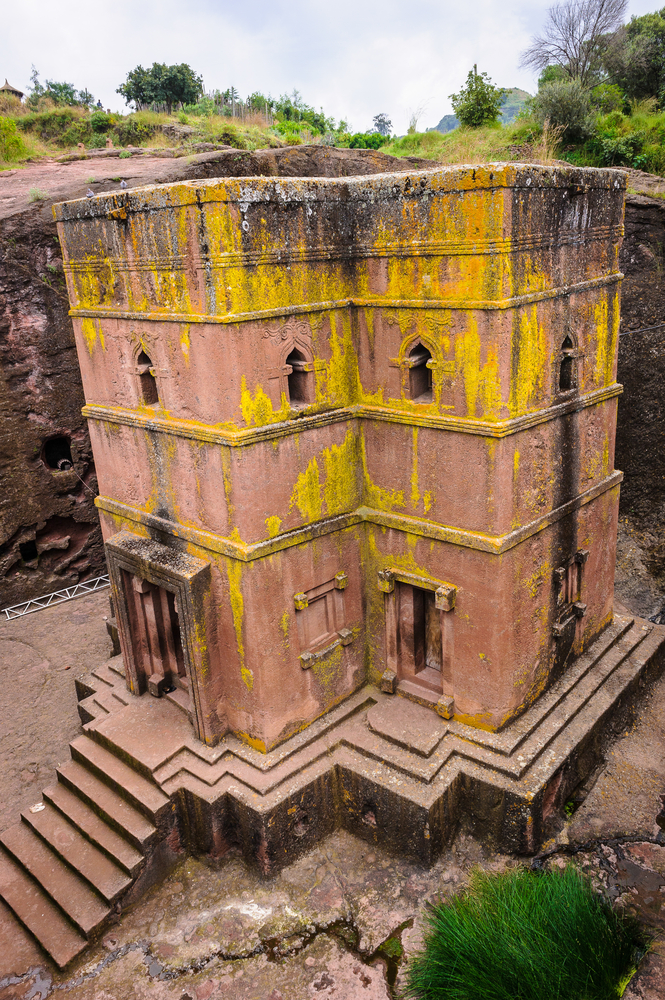Ethiopia’s strong points are that it is backpacker friendly, fairly safe and easy to negotiate. It is a haven for backpackers in an otherwise prohibitively pricey continent. It does still carry the unfortunate reputation of being impossibly famine stricken but that standing is changing as more visitors flock to the country.
With easy and cost effective local flight connections, Ethiopian airlines connects all the major tourist hotspots with one another. Pro tip, book these flights inside the country for cheaper rates. With the airlines almost holding a near monopoly, you tend to meet the same faces over and over again as you crisscross the country. Whether solo or with the new friends you make, in this last but one post of the four part series on Ethiopia, we look at the two towns on the cultural circuit that are of prime importance in terms of history, culture, architecture and religion.
Aksum– Legend has it that Aksum was the ancient capital of Queen Sheba (Our guide even pointed to a thrown like structure in the ruins and claimed that it was Queen Sheba’s throne). Aksum has traditionally been the site of coronation for Ethiopian Kings and Queens, It is a town that is teeming with possibilities. A majority of the sites/ruins of this civilization of antiquity has hardly been explored or excavated. It is one of, if not the most important site of pilgrimage for most Ethiopians. Almost all devout Ethiopian Christians firmly believe that a tiny chapel in this little rural town contains the Ark of the Covenant said to hold Moses’ Ten Commandments.
Apart from historic churches, some standing but mostly in ruins monolithic obelisks and steales are scattered all around this UNESCO World Heritage site town. While the ruins are impressive by themselves, it is the vast network of tombs lying beneath them that shrouds the little town in mystery and intrigue. Speculation is rife of hidden treasures lying yet undiscovered in the as yet undiscovered tombs. Hence, it carries unobtrusively an aura of possibility.
Unexpectedly, however, what made Aksum incredibly special for us was a power outage. Power failures are common in this rustic town. What we didn’t expect was the resplendent night sky with no manmade light source for miles around. With no light pollution the millions of pinpoint sparkling jewels in the sky lent the ancient town with its steales and obelisks a potent yet magical feeling of being transported way back in time.

Lalibela– is purportedly only next to Aksum in being an important site of pilgrimage for Ethiopians. Architecturally the 900 year old monolithic stone churches are comparable to the stunning rock hewn churches of Petra in Jordan. If there is one thing you shouldn’t miss in Ethiopia, it would be these incredible monolithic structures. The churches are grouped into four depending on the four cardinal directions. You would do well to hire a guide. Prices are usually negotiable, costing anywhere between 400 -600 Birr. Guides are knowledgeable and cover the main churches meticulously and in detail
Men and women in traditional flowing white robes flock the many temples giving the entire town character, like Aksum, a feel from a different era. After you have had your fill of temples, you can hire the same guide to take you up to Ashkton Maryam that is about 1.5 hour hike up a mountain. Though the church perched high up is not as imposing as the rock hewn ones in town, the hike itself is breathtaking offering panoramic views of Laibela and the surrounding plains stretching across the horizon.
On the way, you are bound to encounter curious locals, goatherds and some tradesmen selling local artifacts. Large plateaus just before the church have been converted to farmland only adding to the bucolic charm.
As you clamber down pleasantly tired, even as you walk into town do not be surprised if you are invited by complete strangers into their homes for a tea ceremony. Locals are friendly and eager to interact with foreign tourists. For a taste of more local camaraderie and revelry, Lalibela is also small enough to warrant several trips to its cozy tej houses and tejbeits.
These two towns should be at the top of your list while covering the cultural circuit. In the next and final post we will explore other important sites of interest on the popular Ethiopian cultural trail.
Feature image- Ethiopian pilgrims at Lalibela.



Leave a Reply